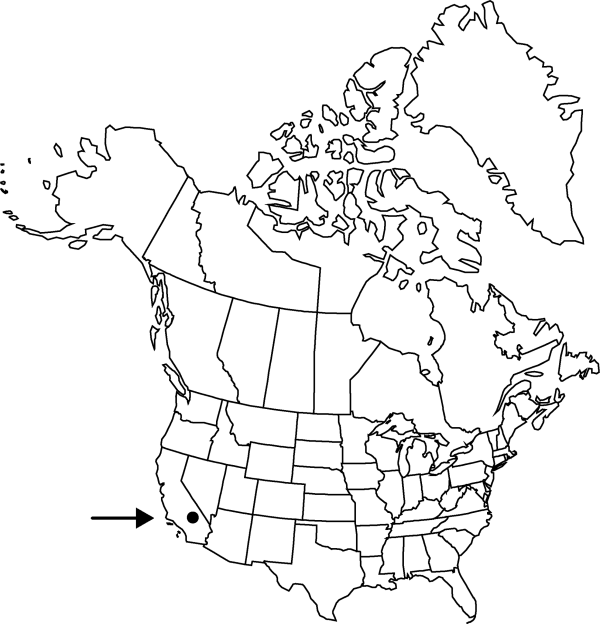Difference between revisions of "Opuntia basilaris var. treleasei"
in L. H. Bailey, Cycl. Amer. Hort. 3: 1147. 1901.
Common names: Kern beavertail pricklypear Trelease’s beavertail pricklypear
EndemicConservation concern
Basionym: Opuntia treleasei J. M. Coulter Contr. U.S. Natl. Herb. 3: 434. 1896 (as treleasii)
FNA>Volume Importer |
imported>Volume Importer |
||
| (7 intermediate revisions by 2 users not shown) | |||
| Line 1: | Line 1: | ||
{{Treatment/ID | {{Treatment/ID | ||
|accepted_name=Opuntia basilaris var. treleasei | |accepted_name=Opuntia basilaris var. treleasei | ||
| − | |accepted_authority=(J. M. Coulter) J. M. Coulter ex Toumey | + | |accepted_authority=(J. M. Coulter) J. M. Coulter ex Toumey |
|publications={{Treatment/Publication | |publications={{Treatment/Publication | ||
|title=in L. H. Bailey, Cycl. Amer. Hort. | |title=in L. H. Bailey, Cycl. Amer. Hort. | ||
| Line 8: | Line 8: | ||
}} | }} | ||
|common_names=Kern beavertail pricklypear;Trelease’s beavertail pricklypear | |common_names=Kern beavertail pricklypear;Trelease’s beavertail pricklypear | ||
| − | |basionyms={{Treatment/ID/ | + | |special_status={{Treatment/ID/Special_status |
| + | |code=E | ||
| + | |label=Endemic | ||
| + | }}{{Treatment/ID/Special_status | ||
| + | |code=C | ||
| + | |label=Conservation concern | ||
| + | }} | ||
| + | |basionyms={{Treatment/ID/Basionym | ||
|name=Opuntia treleasei | |name=Opuntia treleasei | ||
|authority=J. M. Coulter | |authority=J. M. Coulter | ||
| + | |rank=species | ||
| + | |publication_title=Contr. U.S. Natl. Herb. | ||
| + | |publication_place=3: 434. 1896 (as treleasii) | ||
}} | }} | ||
|synonyms= | |synonyms= | ||
| Line 20: | Line 30: | ||
}}<!-- | }}<!-- | ||
| − | --><span class="statement" id="st- | + | --><span class="statement" id="st-undefined" data-properties=""><b>Stem </b>segments erect, flattened, obovate, 9–20 × 5–7.5 cm; areoles 7–8 per diagonal row across midstem segment, circular. <b>Spines</b> 2–8 per areole, usually in distal areoles, spreading, yellow, straight, acicular, terete, 5–25 mm. <b>Fruits</b> with few, pale yellow spines. <b>2n</b> = 33.</span><!-- |
-->{{Treatment/Body | -->{{Treatment/Body | ||
| + | |phenology=Flowering spring (Mar–Apr). | ||
|habitat=Grasslands | |habitat=Grasslands | ||
|elevation=100-200 m | |elevation=100-200 m | ||
|distribution=Calif. | |distribution=Calif. | ||
| − | |discussion=<p>Opuntia basilaris var. treleasei is in the Center for Plant Conservation’s National Collection of Endangered Plants.</p><!-- | + | |discussion=<p><i>Opuntia basilaris </i>var.<i> treleasei</i> is in the Center for Plant Conservation’s National Collection of Endangered Plants.</p><!-- |
--><p>of conservation concern</p> | --><p>of conservation concern</p> | ||
|tables= | |tables= | ||
| Line 36: | Line 47: | ||
-->{{#Taxon: | -->{{#Taxon: | ||
name=Opuntia basilaris var. treleasei | name=Opuntia basilaris var. treleasei | ||
| − | + | |authority=(J. M. Coulter) J. M. Coulter ex Toumey | |
| − | |authority=(J. M. Coulter) J. M. Coulter ex Toumey | ||
|rank=variety | |rank=variety | ||
|parent rank=species | |parent rank=species | ||
| Line 43: | Line 53: | ||
|basionyms=Opuntia treleasei | |basionyms=Opuntia treleasei | ||
|family=Cactaceae | |family=Cactaceae | ||
| + | |phenology=Flowering spring (Mar–Apr). | ||
|habitat=Grasslands | |habitat=Grasslands | ||
|elevation=100-200 m | |elevation=100-200 m | ||
| Line 49: | Line 60: | ||
|publication title=in L. H. Bailey, Cycl. Amer. Hort. | |publication title=in L. H. Bailey, Cycl. Amer. Hort. | ||
|publication year=1901 | |publication year=1901 | ||
| − | |special status= | + | |special status=Endemic;Conservation concern |
| − | |source xml=https:// | + | |source xml=https://bitbucket.org/aafc-mbb/fna-data-curation/src/2e0870ddd59836b60bcf96646a41e87ea5a5943a/coarse_grained_fna_xml/V4/V4_276.xml |
|subfamily=Cactaceae subfam. Opuntioideae | |subfamily=Cactaceae subfam. Opuntioideae | ||
|genus=Opuntia | |genus=Opuntia | ||
|species=Opuntia basilaris | |species=Opuntia basilaris | ||
|variety=Opuntia basilaris var. treleasei | |variety=Opuntia basilaris var. treleasei | ||
| − | |||
| − | |||
| − | |||
| − | |||
| − | |||
| − | |||
| − | |||
| − | |||
| − | |||
| − | |||
| − | |||
| − | |||
| − | |||
}}<!-- | }}<!-- | ||
-->[[Category:Treatment]][[Category:Opuntia basilaris]] | -->[[Category:Treatment]][[Category:Opuntia basilaris]] | ||
Latest revision as of 21:57, 5 November 2020
Stem segments erect, flattened, obovate, 9–20 × 5–7.5 cm; areoles 7–8 per diagonal row across midstem segment, circular. Spines 2–8 per areole, usually in distal areoles, spreading, yellow, straight, acicular, terete, 5–25 mm. Fruits with few, pale yellow spines. 2n = 33.
Phenology: Flowering spring (Mar–Apr).
Habitat: Grasslands
Elevation: 100-200 m
Discussion
Opuntia basilaris var. treleasei is in the Center for Plant Conservation’s National Collection of Endangered Plants.
of conservation concern
Selected References
None.
Lower Taxa
None.
